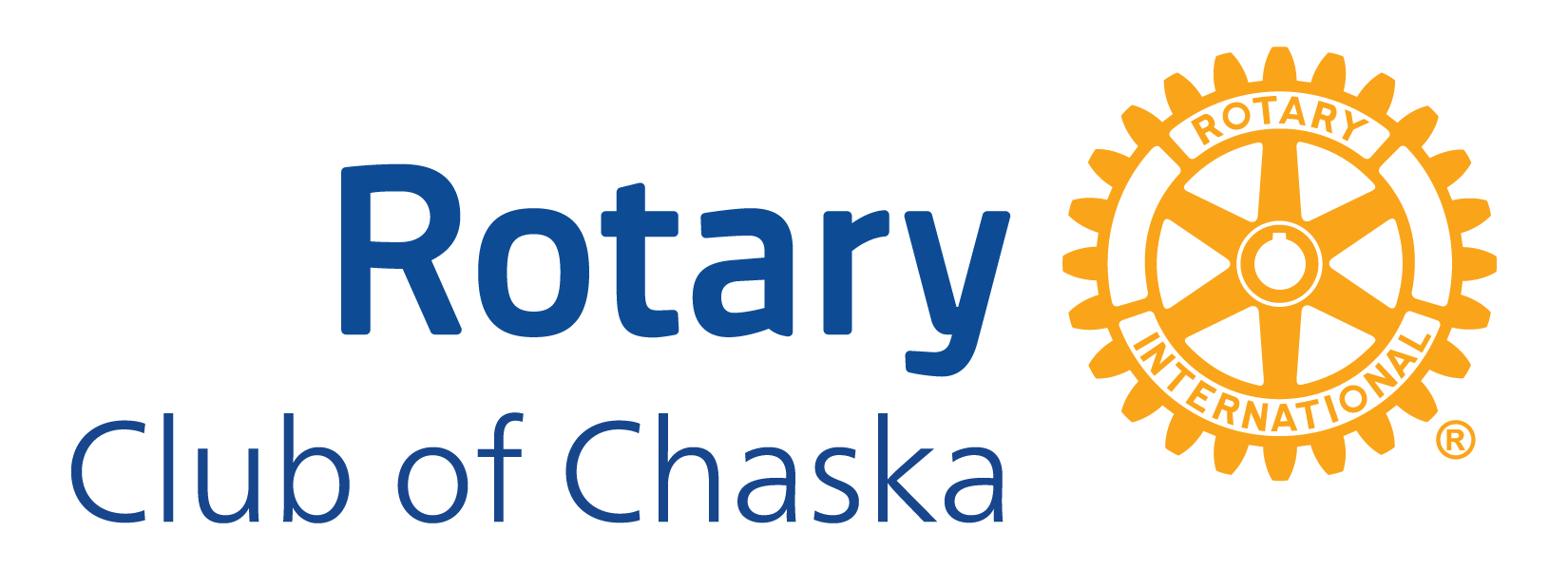
About Rotary Club of Chaska
We are part of Rotary International, a secular, non-political, global network of 1.4 million committed individuals who volunteer their skills and resources to solve pressing issues and address community needs.
DON'T FORGET: Our April 18 morning meeting will be held at Chaska Community Center.
There will be no Zoom option.
Notes From Our Most Recent Meeting
Andy Mooney, Red Bench Bakery
Andy Haugen introduced Andy Mooney, the creator and leader of Red Bench Bakery. With Chaska and Excelsior benefitting from his extensive training and culinary experience, we learned about Andy Mooney’s Air Force travels (only in Mississippi), how he came up with the bakery name, and his philosophy in training his bakery team. The Red Bench has been active in community support in both cities and his planned cocktail bar (with appetizers) will hopefully bring more business activity to our city center. Andy is working on developing a low-cost, high-nutrition bread loaf as part of his community commitment. He ended his presentation with an anecdote about his unique cinnamon roll, which has earned the praise of many (including this writer, as soon as our meeting ended.)
Location and contact information:
Chaska: 500 North Chestnut St., 952-361-5509. Excelsior: 284 Water St., 952-474-5608.

Andy Mooney


Yummers!
Scholarships

The Scholarship Committee interviewed scholarship applicants and selected the awardees, who will attend our April 25 meeting. Pictured (L to R) Ken Hiller, Jean Heyduck, Bob Chinnock, Robin Nesburg, and Nate Bostrum. Not pictured: committee chair Celi Haga.
New Generations

In support of the New Generations Program, Greg and Cindy Anderson are now hosting our visitor from South Korea - Aimee Choi (Amy). She is a 2022 graduate of Ewha Woman’s University in Seoul, with a degree in Climate and Energy Systems Engineering. She was employed by Pricewaterhouse Coopers in Korea for the past two years as an ESG consultant. ESG stands for Environmental, Social, and Governance. It's what companies and investors look at to see how a company impacts the planet, society, and its own management. 'Environmental' covers things like climate change and resource use, 'Social' looks at issues like labor conditions and diversity, and 'Governance' focuses on things like ethical behavior and transparency in how a company is run. In her few weeks here, she has been to Minneopa State Park and seen bison, driven a tractor, experienced fencing, and seen the spoon and cherry at the Minneapolis Sculpture Garden..
Exchange Student Update
Viola has settled back into Minnesota life after her exciting trip to Tennessee and Dollywood. She let some of her exuberance out during a “paint fight” with the cast and theater crew of her high school play.
STRIVE Update

April 4, 2024 Meeting
Mentors practiced mock interviews with the students, providing tips for both before, during and after interviews.
-
Tree Planting at Lion's Park
Apr. 20, 2024 8:00 a.m.
-
Scholarship Breakfast
Apr. 25, 2024
7:30 a.m. – 8:30 a.m. -
Cinco de Mayo Breakfast
May 02, 2024
7:30 a.m. – 8:30 a.m. -
Christmas in May
May 04, 2024
-
Adopt-a-Highway & Schram Social
May 22, 2024
President
Co-President
Treasurer
Immediate Past President
Vice President
Club Foundation Chair

.png)












